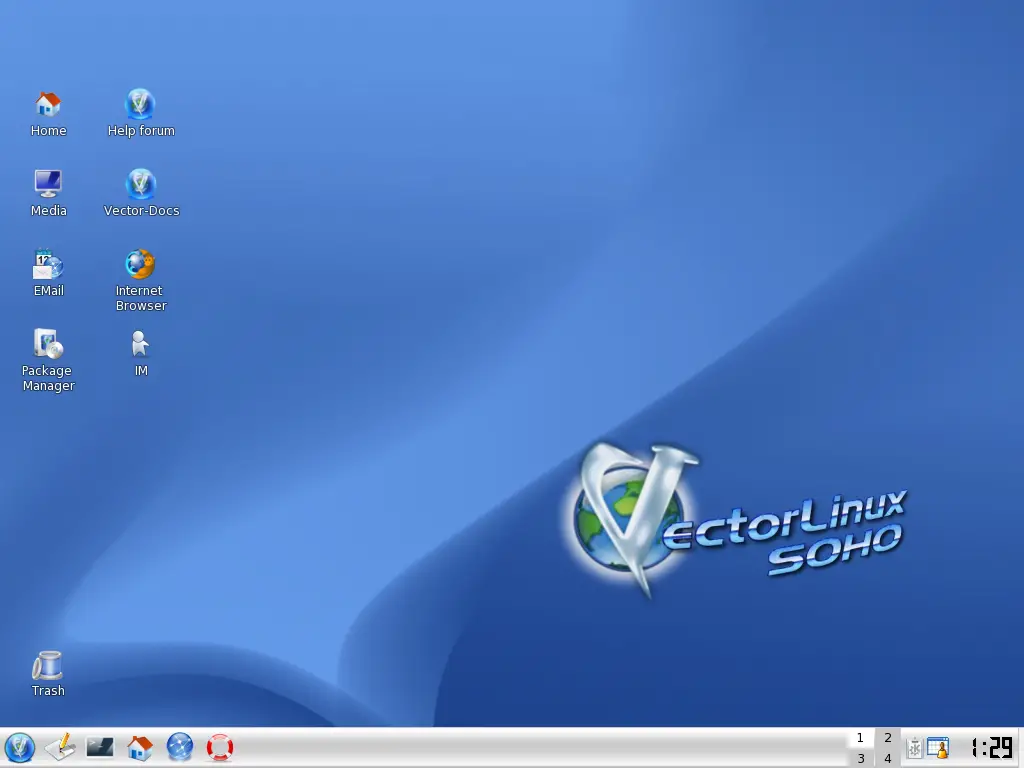Linux Operating System Details
Linux can freely be qualified as an Internet phenomenon. Created as a UNIX-based operating system under the GNU license two decades ago, Linux has set high standards in the release of open-source technologies that master the Internet nowadays. Due to its ground-breaking concept and support by a large community of developers, Linux underwent a truly explosive growth to turn into one of the most widely adopted UNIX-like OSs in the world. The fact that it is used as both a desktop operating system and a server platform makes it accessible to millions of users online.
x, Unix and GNU
By combining a lot of key characteristics such as fastness, stability, security and adaptability, Linux has become the most preferred alternative to commercial Unix and Microsoft operating systems. Its proven quality of performance has been given high credits by users and explains why most of the World Wide Web today is built upon the Linux software platform.
Based on the Unix core, originally developed back in the 1960s, Linux retains its modular concept, which makes it very stable and easily customizable. When GNU was initially started as a project in 1985, it aimed to provide a complete Unix-compatible software system. However, until the 1990s, work on the kernel and the drivers were in the initial stage. This motivated Linus Torvalds to create his own kernel in 1991 using the libraries and utilities from the GNU project, laying the foundations of the GNU/Linux project and creating the core of one of the most powerful operating systems.
The power of Linux is stemming from the kernel – the operating system code that is aimed at managing the communication between computer hardware and software. Since the Linux kernel is designed to be small and fast, it allows for very efficient management of the basic computer resources such as memory, disk space and CPU power.
The kernel is the driving force of the Linux OS. It handles all processes and defines application behavior. In Linux distributions, the graphic system does not run as a kernel process, which allows for the graphic system to be restarted in the event of a crash, without the need to restart the computer.
Linux can freely be qualified as an Internet phenomenon. Created as a UNIX-based operating system under the GNU license two decades ago, Linux has set high standards in the release of open-source technologies that master the Internet nowadays. Due to its ground-breaking concept and support by a large community of developers, Linux underwent a truly explosive growth to turn into one of the most widely adopted UNIX-like OSs in the world. The fact that it is used as both a desktop operating system and a server platform makes it accessible to millions of users online.
x, Unix and GNU
By combining a lot of key characteristics such as fastness, stability, security and adaptability, Linux has become the most preferred alternative to commercial Unix and Microsoft operating systems. Its proven quality of performance has been given high credits by users and explains why most of the World Wide Web today is built upon the Linux software platform.
Based on the Unix core, originally developed back in the 1960s, Linux retains its modular concept, which makes it very stable and easily customizable. When GNU was initially started as a project in 1985, it aimed to provide a complete Unix-compatible software system. However, until the 1990s, work on the kernel and the drivers were in the initial stage. This motivated Linus Torvalds to create his own kernel in 1991 using the libraries and utilities from the GNU project, laying the foundations of the GNU/Linux project and creating the core of one of the most powerful operating systems.
The power of Linux is stemming from the kernel – the operating system code that is aimed at managing the communication between computer hardware and software. Since the Linux kernel is designed to be small and fast, it allows for very efficient management of the basic computer resources such as memory, disk space and CPU power.
The kernel is the driving force of the Linux OS. It handles all processes and defines application behavior. In Linux distributions, the graphic system does not run as a kernel process, which allows for the graphic system to be restarted in the event of a crash, without the need to restart the computer.
Linux Operating System
Linux Operating System
Linux Operating System
Linux Operating System
Linux Operating System
Linux Operating System
Linux Operating System
Linux Operating System
Linux Operating System
Linux Operating System
Linux Operating System
Linux Operating System
Linux Operating System
Linux Operating System
Linux Operating System
Linux Operating System
Linux Operating System
Linux Operating System
Linux Operating System
Linux Operating System
Linux Operating System















No comments:
Post a Comment